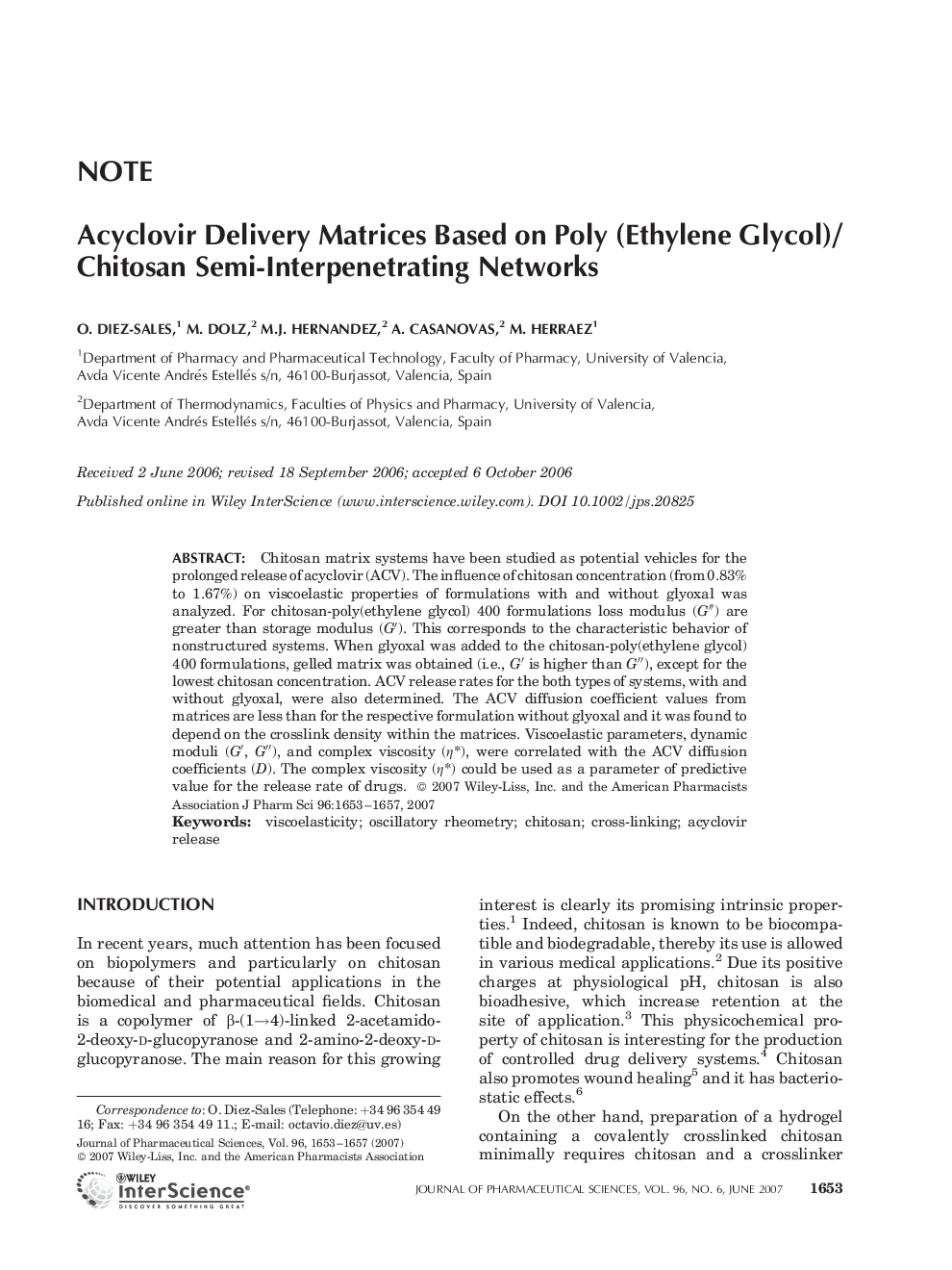| Article ID | Journal | Published Year | Pages | File Type |
|---|---|---|---|---|
| 2487783 | Journal of Pharmaceutical Sciences | 2007 | 5 Pages |
Abstract
Chitosan matrix systems have been studied as potential vehicles for the prolonged release of acyclovir (ACV). The influence of chitosan concentration (from 0.83% to 1.67%) on viscoelastic properties of formulations with and without glyoxal was analyzed. For chitosanâpoly(ethylene glycol) 400 formulations loss modulus (Gâ³) are greater than storage modulus (Gâ²). This corresponds to the characteristic behavior of nonstructured systems. When glyoxal was added to the chitosanâpoly(ethylene glycol) 400 formulations, gelled matrix was obtained (i.e., Gâ² is higher than Gâ³), except for the lowest chitosan concentration. ACV release rates for the both types of systems, with and without glyoxal, were also determined. The ACV diffusion coefficient values from matrices are less than for the respective formulation without glyoxal and it was found to depend on the crosslink density within the matrices. Viscoelastic parameters, dynamic moduli (Gâ², Gâ³), and complex viscosity (η*), were correlated with the ACV diffusion coefficients (D). The complex viscosity (η*) could be used as a parameter of predictive value for the release rate of drugs.
Related Topics
Health Sciences
Pharmacology, Toxicology and Pharmaceutical Science
Drug Discovery
Authors
O. DiezâSales, M. Dolz, M.J. Hernandez, A. Casanovas, M. Herraez,
